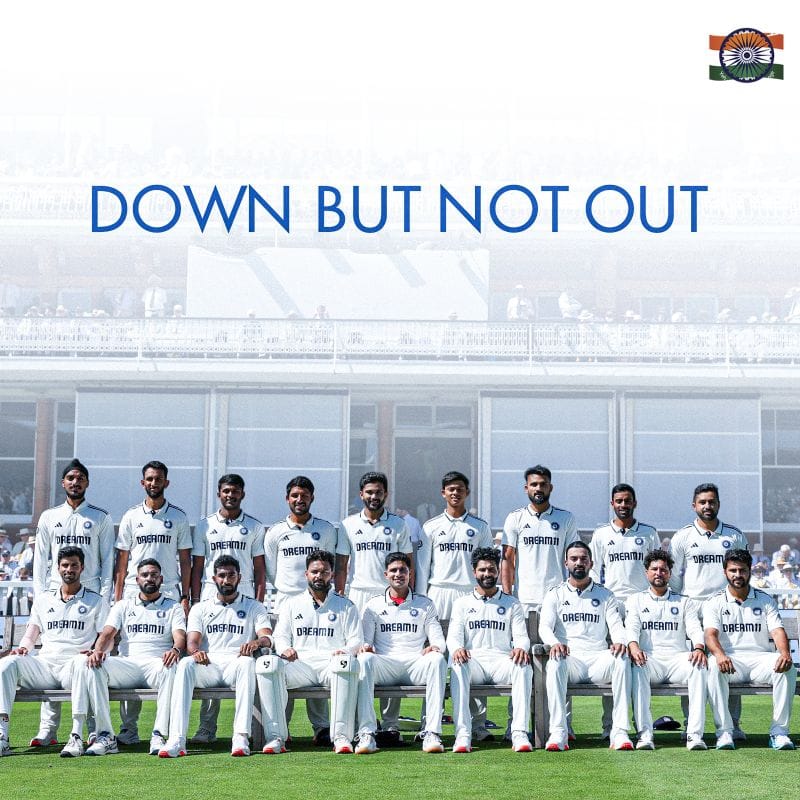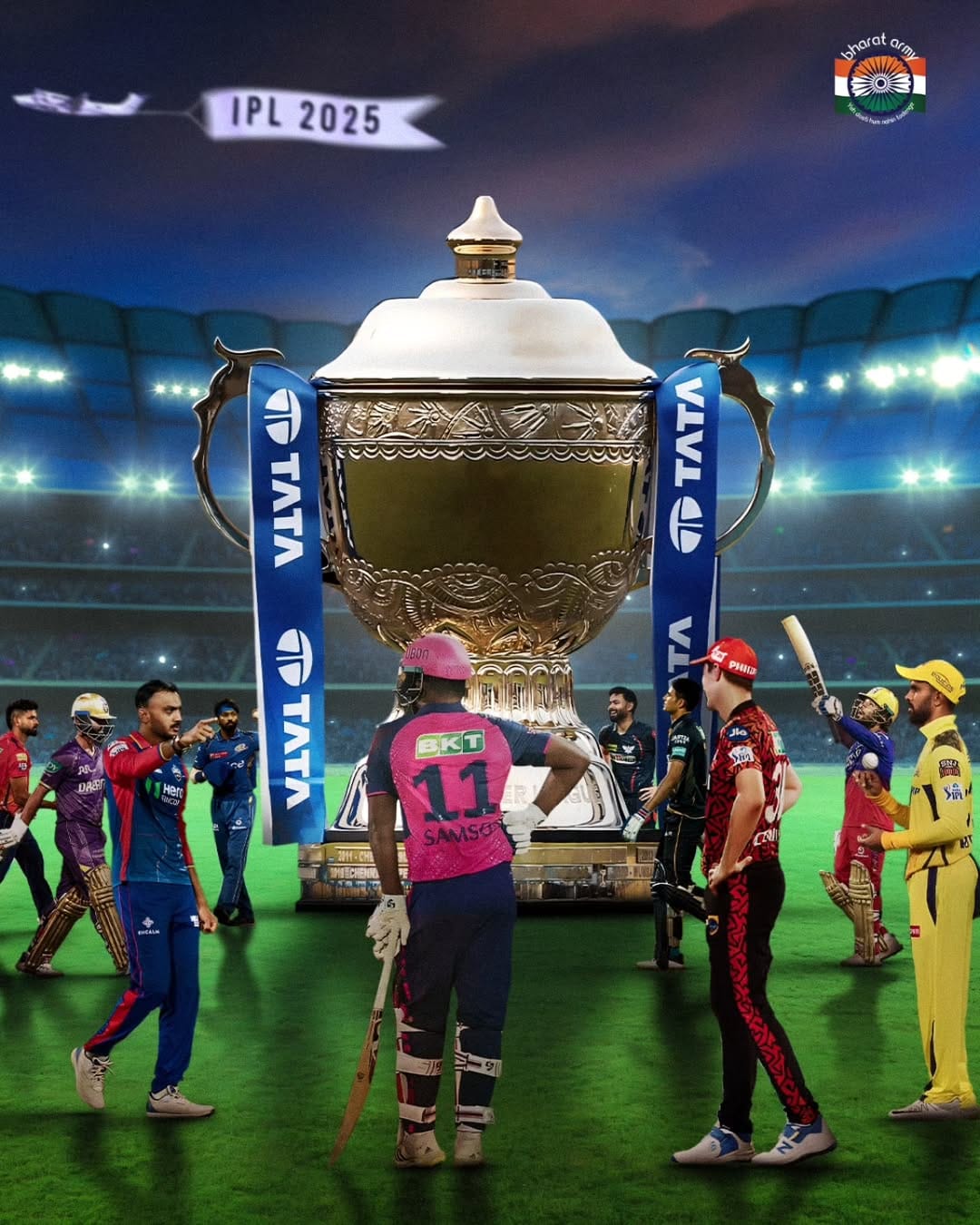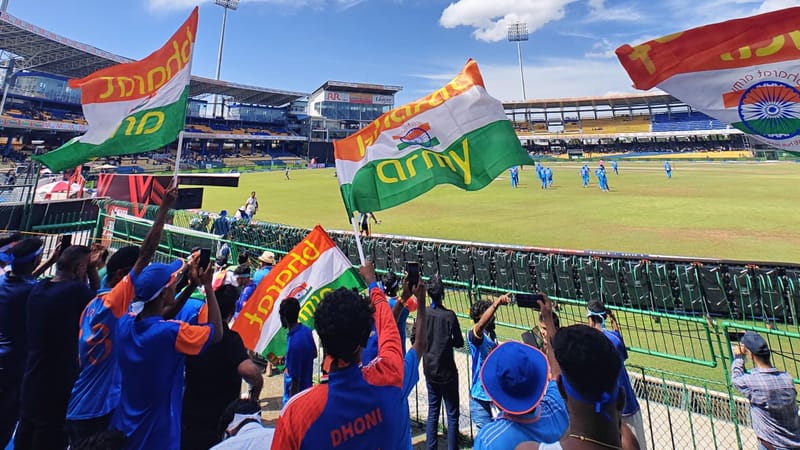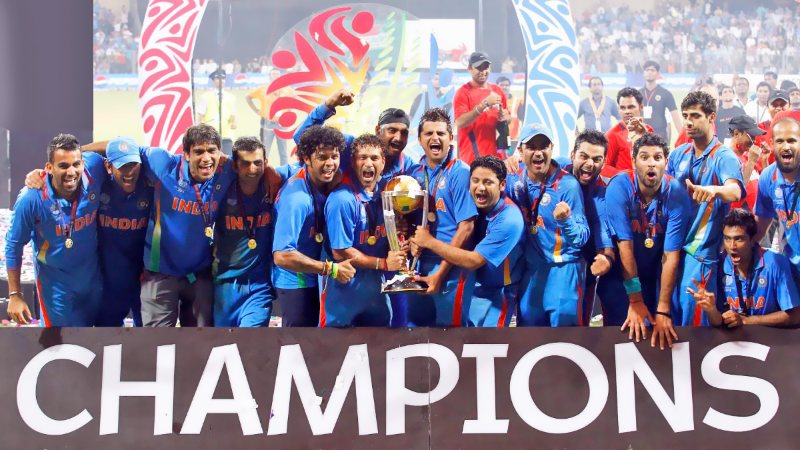
There is something truly special about the ODI World Cup. Every sport has its marquee event, which brings the entire nation together. Memories for a lifetime are made, tears are shed, which over some time take the form of a scar, euphoria blows through the roof, and when the team you support wins, the world seems like one happy place.
The World Cup returns to India for the 4th time on October 5th, and a billion fans are once again starting to dream that their Men in Blue will repeat what Dhoni and his men did during the spring of 2011, and inspire a whole new generation.
The Cricket World Cup isn't just a trophy for us Indians. It's a symbol of national pride. It's also a huge reminder to us of what a pivotal role it has played in turning Indian cricket into the powerhouse that it is today.
It is also a reminder that all good things to us happen by accident. Why do I say that? Because, Indians, as they always are to anything new, didn't warm up to the limited-overs format initially. They called it 'pyjama cricket'. Their participation in the inaugural World Cup in England in 1975 had more to do with the fact that they had no choice but to feature in it.
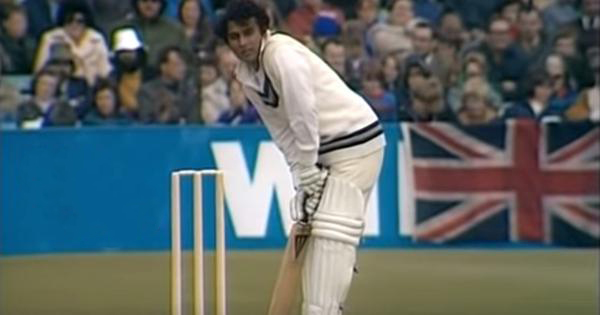
And, their first-ever WC game perfectly put into context their mindset as Sunil Gavaskar batted all through the 60 overs in the run-chase of 335 (against England) and only scored 36 runs, much to the astonishment of the on-lookers.
India managed just a solitary win- vs. East Africa- across the first couple of World Cups, even losing to a non-Test playing nation in the form of Sri Lanka.
World Cup 2023: The Bharat Army's Unifying Spirit
1983: From being an afterthought to becoming World Champions
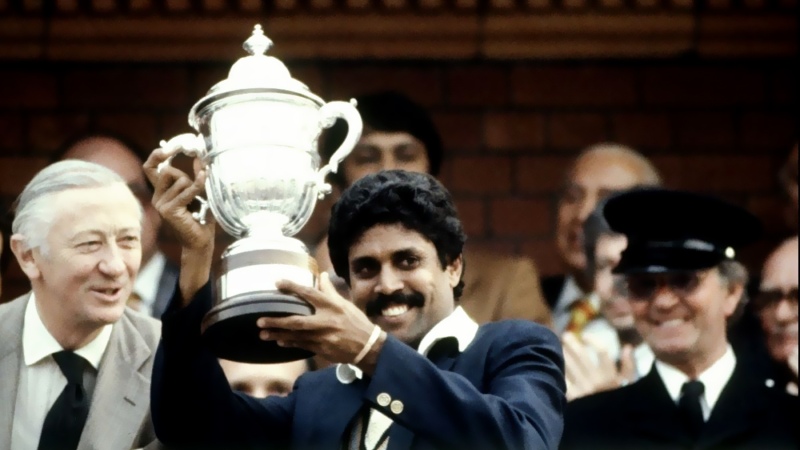
However, something changed in 1978. It was the year when India's first limited-overs superstar, Kapil Dev made his international debut
The winds of change started to blow in full swing after Kapil was appointed captain of the ODI team in 1980.
Under Dev, the ODI slowly started to take shape. From relying on spinners to injecting seam-bowling all-rounders in the playing XI, the make-up of the team had changed beyond recognition, and the entire world was soon about to find that out.
Just 72 days before the 1983 WC, India gave a trailer of what was about to follow as they smashed world champions West Indies by 27 runs in the latters' den. Kapil spearheaded the charge with a whirlwind 38-ball 72.
But, India still went into the World Cup as massive underdogs. Before the event, they had won just 12 takes out of 40, and while one did expect them to better their record from the past two events, no one in their wildest dreams, including the players, could have imagined what was about to follow.
India started their campaign on a fairytale note as they beat the West Indies in their opening game by 34 runs, before swatting aside Zimbabwe comfortably.
But, then, tragedy struck! The Kapil Dev-led unit was hammered by the defending champions in their 2nd meeting by 66 runs and then by Australia by a whopping 162 runs.

India's next game was a must-win affair against Zimbabwe, but they got off to a disastrous start as they lost their first 4 wickets for a mere 9 runs.
9/4 soon became 17/5, and it looked as if it was all over for Kapil's Devils. But Kapil had other ideas. The champion batsman proceeded to lead from the front to carve out a comeback that is still remembered by everyone.
The Haryana Hurricane went on to smash the first-ever hundred for India in ODIs, and the highest individual score in the format at the time as he racked up a breathtaking 175 off just 138 deliveries.
India went on to win the match and qualify for the semi-finals, where an all-round performance from Mohinder Amarnath (2/27 & 46) and brilliant knocks from Yashpal Sharma (51 off 32) and Sandeep Patil (61) sent hosts England out of their party.
So, the stage was set for the summit clash between the giants & the giant slayers at Lord's, but not even the most optimistic Indian fans gave their side a chance to beat the almighty West Indies.
And, at the halfway stage, it looked doom and gloom as the WI pace battery dismantled the Indians for a mere 183 on a green Lord's wicket.
India needed to see the back of Viv Richards as soon as possible if they were to pose any challenge to the Windies. Richards, as usual, started flaying the attack to all corners of the stadium, until Kapil decided to take it upon himself to change the flow of wind.
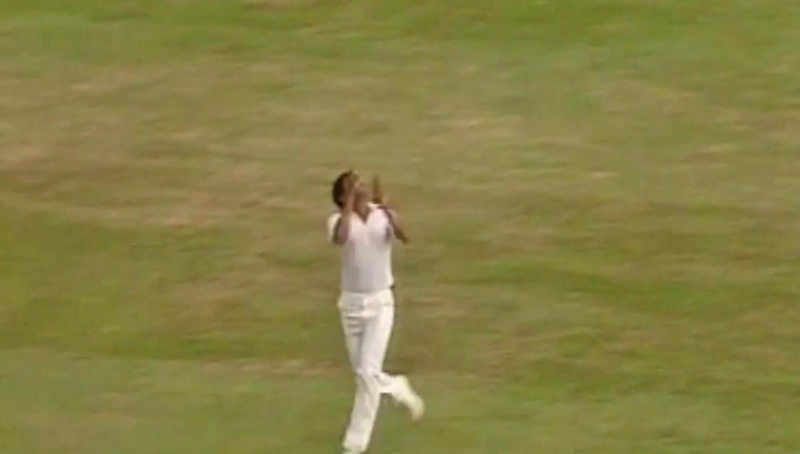
The champion cricketer proceeded to run backward to an attempted pull-shot from Richards, eventually plucking a stunning catch to set the sea of change in full flow.
The West Indies proceeded to implode after Viv's dismissal, and although Geoff Dujon and Malcolm Marshall tried their best to stage a recovery, their efforts went in vain as the defending champions were eventually bowled out for 140 to hand India a heist so unprecedented that it still feels unbelievable to this day.
From rank-outsiders to world beaters, India had just completed a fairytale for the ages, and as Kapil & his Men stood on the Lord's balcony with the World Cup trophy in their hands, a generation of Indians who had grown up carrying the massive scars of colonialism had just been healed.
Women In Blue Script Historic Gold At Asian Games 2023
1987- World Cup finds its spiritual home in India
The 1983 World Cup victory wasn't just special as a cricketing achievement, but it was also a major confidence booster for the nation.
It was a moment that gave the underconfident Indians a ray of hope that no matter how difficult the situation is, they are allowed to dream.
The World Cup triumph also proved to be a massive shot in the arm for the ODI format as Indians proceeded to fall in love with it. From "pajama cricket", it became "tamasha cricket", with fans wanting more and more of it.
The BCCI realized the same, and not only did they start conducting more ODI cricket, but also bid aggressively to win the hosting rights of the 1987 event.
And, they did claim the same, along with Pakistan. The World Cup made its way to India, and fans took it with both hands as they packed the stadiums to the rafters.
India came into the tournament as favorites, and while they failed to beat England in the semi-finals, it simply did not matter to the Indian fans as they came out in huge numbers to attend the final between Australia and England at the iconic Eden Gardens.
From the individual point-of-view, the tournament proved to be a memorable one for 'strokeless wonder' Navjot Singh Sidhu, who silenced his naysayers by smashing 4 consecutive half-centuries at a rapid rate. And, of course, seamer Chetan Sharma who claimed a historic hat-trick against New Zealand
India failed to defend their crown thanks to a sweep masterclass from England's Graham Gooch, but the nation, as a whole, aptly displayed that it was soon to become the spiritual home of cricket, and the BCCI as the new powerhouse in the next few decades.
The 1990s: A period of sustained gloom amid occasional highs
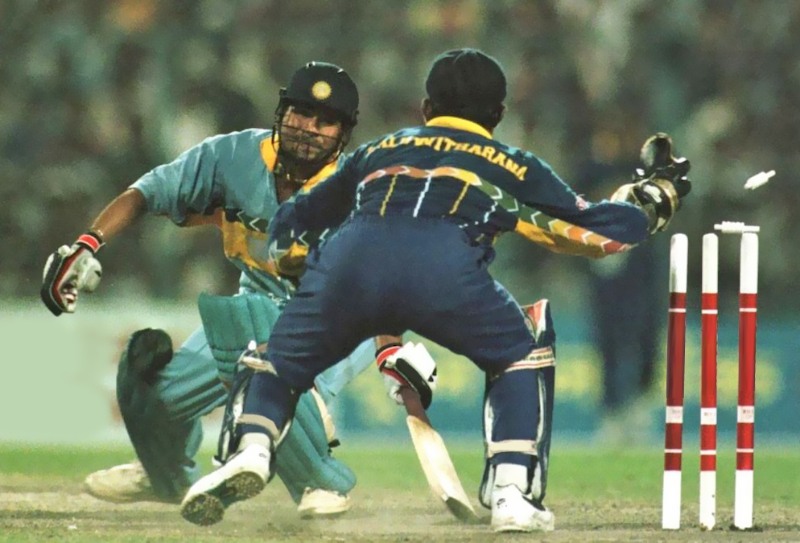
The 1983 World Cup triumph gave wings of dreams to plenty of aspirational Indians.
As Kapil and his men did the unthinkable at Lord's, a 10-year-old kid in Mumbai had started to dream: Dream of representing the country one day, and hopefully lift the Cup in front of the entire world.
That kid was Sachin Ramesh Tendulkar!
Sachin performed the duties of a ball-boy during the 1987 World Cup, and 5 years later, he was representing his country in the quadrennial event as a 19-year-old.
The 90s was a period of doom for Indian cricket, with occasional highs thanks largely to one man and one man only, Sachin Tendulkar.
Sachin performed with both bat and ball during his maiden event, and while we did win against Pakistan, the tournament proved to be a forgettable one as the Men in Blue bowed out in the 1st round.
4 years later, the World Cup returned to India, but once again, Sachin proved to be a lone performer for his team. He smashed 500+ runs at a breathtaking strike rate, but his teammates simply couldn't match up to his level.
While India again defeated Pakistan- thanks to a breathtaking assault from Ajay Jadeja and a brilliant spell from Venkatesh Prasad and his epic face-off with Aamir Sohail- they were hammered by eventual champions Sri Lanka in the semi-final at the Eden Gardens, with Sachin again playing a lone hand.
Chasing 252, India was 95/1 at one stage, with Sachin going great guns. But, the moment he was dismissed, a procession ensued as the home side went from 95/1 to 120/8.
The crowd proceeded to create a ruckus, and Sachin's dream of lifting the WC ended up in tears once again.
The story remained pretty much similar in 1999 as India again heavily depended on Sachin, who had an average tournament by his very high standards. He was also stung by the untimely death of his father midway through the WC.
Sachin returned home to attend his father's funeral, and amid all this, India went on to lose to Zimbabwe to severely dent their chances of making it to the semis.
Sachin returned to England to join the team, and while he did score an emotional hundred against Kenya, the damage had already been done, and his dream of winning the WC was again crushed.
2003-2007- A tale of rejuvenated hopes and broken dreams

The start of a new millennium saw the Indian team go through a period of transition, and amid this, several bonafide match-winners like Virender Sehwag, Yuvraj Singh, Zaheer Khan, Harbhajan Singh became a part of the team.
However, India entered the 2003 World Cup on the back of horrendous form, and it showed in their opening two games as they struggled to beat the Netherlands before getting humiliated by the rampaging, all-conquering Australians.
The fans had had enough, and what followed next were ugly scenes of people burning effigies of players across the country.
The situation became so dire that Sachin had to come out in public and urge the fans to support the team.
The defeat to Australia proved to be a blessing in disguise as the Indians proceeded to come together as an outfit to deliver 9 consecutive victories to make their way to the final.
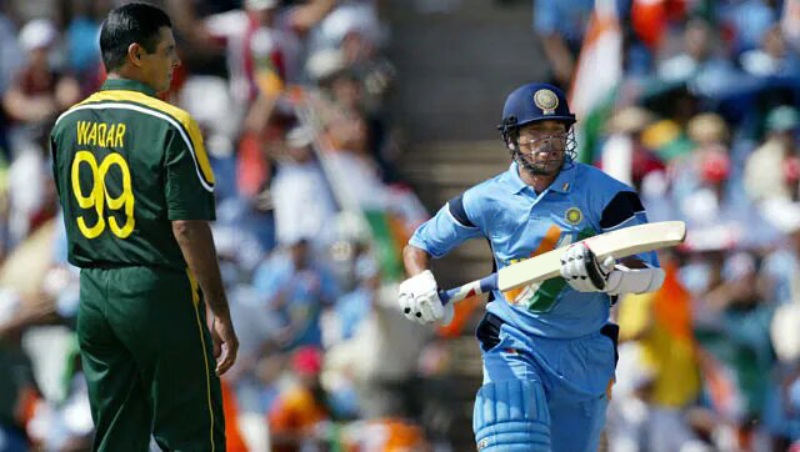
Sachin led from the front with the bat as he smashed brilliant match-winning half-centuries against Pakistan and Sri Lanka, while the middle-order trio of Rahul Dravid, Yuvraj Singh, and Mohammad Kaif led a stunning carry job against the likes of Pakistan and New Zealand.
The fast bowling trio of Javagal Srinath-Zaheer Khan-Ashish Nehra dismantled oppositions for fun, while skipper Sourav Ganguly led from the front by scoring a match-winning ton against Kenya in the semi-final.
All of a sudden, the nation had once again started to dream. Puja and Hawans were conducted all over the country in the lead-up to the final against Australia.
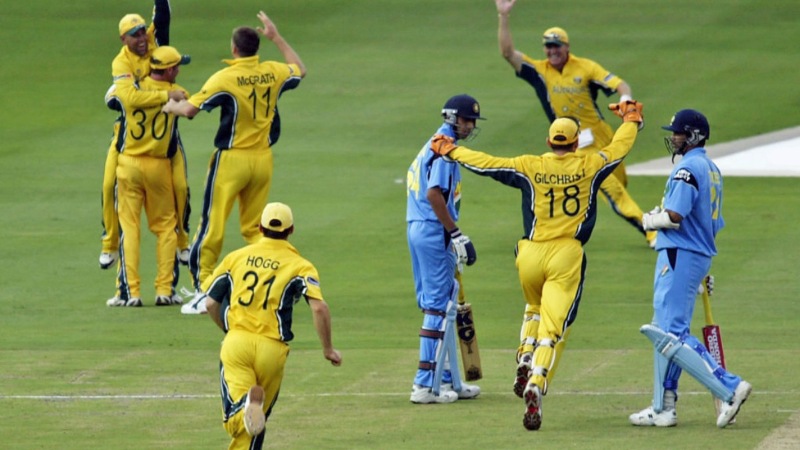
But, once again, Sachin and the entire nation's dream were brutally shattered by the all-conquering Australian team --spearheaded by their captain Ricky Ponting, who delivered a killer blow by smashing an unbeaten 140.
India needed Sachin to step up with the bat yet again, but it was not to be as he was dismissed for 4 by Glenn McGrath in the very 1st over of the innings.
The dream had once again been shattered, and you could just see how broken Sachin was as he went to collect the 'Golden Bat' for scoring the most runs (673) in the tournament.

If 2003 was a heartbreak, the 2007 event proved to be a humiliating affair as a chaos-ridden Indian team lost to Bangladesh and Sri Lanka to bow out in the 1st round.
Sachin endured his worst-ever campaign, and the sight of him and his teammates sitting dejected as their dreams were getting crushed by Sri Lanka is something no Indian fan will ever forget.
2011- Sachin finally completes his story as the nation's 28-year-long wait ends
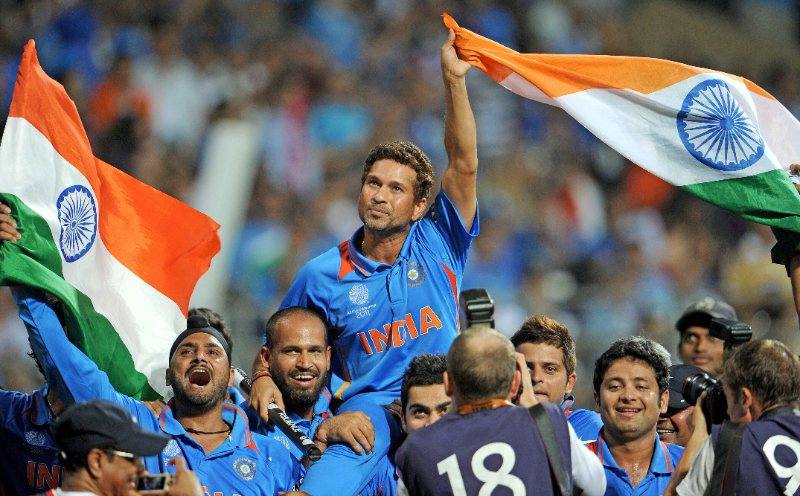
Sachin was at crossroads after the 2007 debacle. He had started to consider retirement before his elder brother reminded him that the next World Cup was in India, and the final could be played in his home city, Mumbai.
This thought gave new wings of hope to the Master Blaster and thus kick-started his second peak as a batsman, which eventually culminated with him realizing his dream in 2011.
Post the 2007 debacle, a sea of change swept through Indian cricket, with MS Dhoni taking over the leadership reins and the likes of Gautam Gambhir, Rohit Sharma, Suresh Raina and Virat Kohli making it to the set-up in place of Rahul Dravid and Sourav Ganguly.
The preparation for the World Cup started in 2008 itself, with the Indian team scripting historic victories in Australia, Sri Lanka, and New Zealand.
Virat Kohli proceeded to cement his place in the first-choice XI courtesy of his consistent run between December 2009-January 2011, and by the time the World Cup rolled around, India had assembled an XI that was more than capable of lifting the trophy after a gap of 28 years.
The build-up to that World Cup was magical. The entire nation was bleeding blue, and the only slogan on their lips was 'Win it for Sachin'.
India's campaign started on an imperious note as Virender Sehwag and Virat Kohli smashed the daylights of the Bangladeshi attack to avenge the heartbreak of 2007.
Sachin soon joined the party as he hit a breathtaking 100s against England and South Africa to lead the run-scoring charts. But, the problem was that the Indian bowling attack-barring Zaheer Khan and their lower-middle order proved to be toothless.
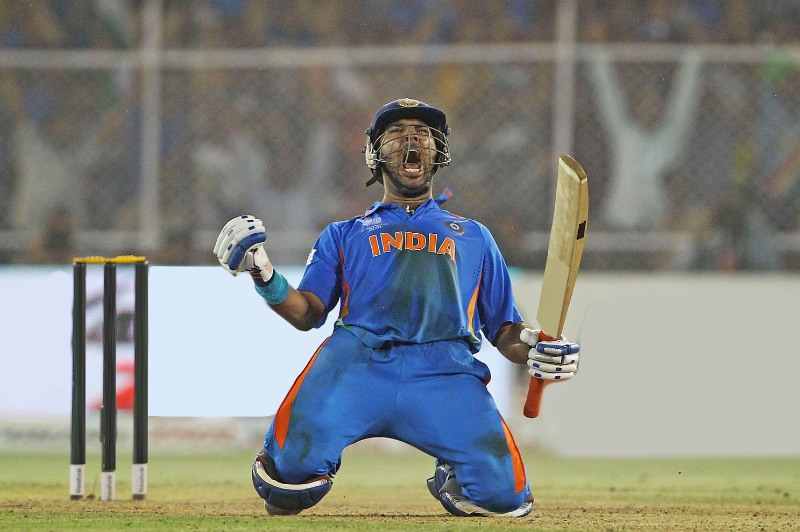
And, it is at this point that Yuvraj Singh stepped up big time. The all-rounder came into the tournament with question marks on his form, but he proceeded to silence his critics by delivering with both bat and ball.
India failed to beat England, and lost to South Africa, which forced them to make a decisive change to their batting unit. They brought Suresh Raina back in the XI ahead of Yusuf Pathan, and it proved to be a masterstroke.
The Men in Blue reserved their best cricket for the knockouts, with different players stepping up on different occasions.
Zaheer Khan led the bowling unit with absolute precision, while Sachin led from the top by scoring priceless half-centuries against Australia and Pakistan in the quarters and semis respectively.
But, it took a magical partnership from Yuvraj Singh and Suresh Raina to help India dump Australia out of the tournament, and avenge the 2003 final heartbreak.
The roar from Yuvraj after he smashed Brett Lee to score the winning runs was a realization of years of heartbreaks that every Indian had suffered over the years.
The victory gave Team India a massive fillip, and while they weren't entirely at their best, they proceeded to beat their arch rivals thanks to yet another classy knock from Suresh Raina and an all-round bowling performance led by Yuvraj Singh & Zaheer Khan against Pakistan in Mohali to set up a date for the summit clash against Sri Lanka in Mumbai.
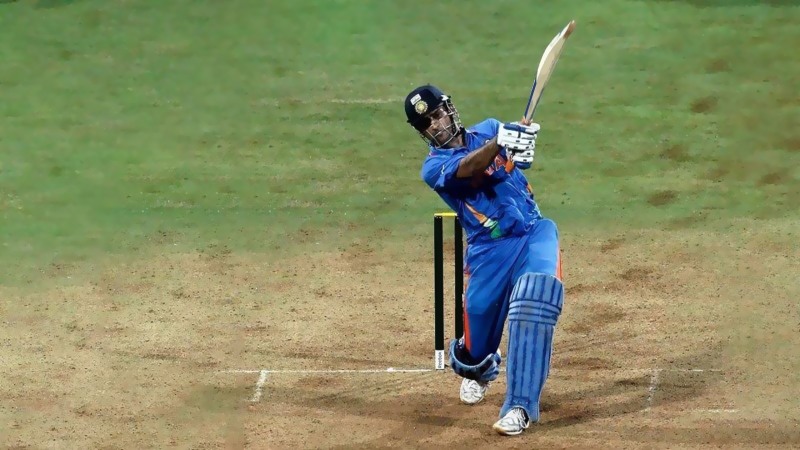
And, so, the day that the entire nation and Sachin in particular had waited for all those years, finally arrived on April 02, 2011.
The tension was unrelenting, and emotions were at their peak. Every run was cheered, every 4 or 6 was met with a standing ovation, and every Indian wicket was met with pin-drop silence.
Chasing 275, India lost both their openers cheaply, and as a dejected Sachin was making his way out of the ground, his soon-to-be successor came out with determination and passion, and along with Gautam Gambhir, calmed down a billion nerves.
And, soon, the caravan started to roll on. The crowd acted as the 12th man as every single run was met with raucous applause.
Kohli and Gambhir took India to 114/2 before the former was brilliantly caught by T Dilshan.
It is at this moment that captain MS Dhoni decided to lead from the front by promoting himself ahead of an in-form Yuvraj Singh.
The rest, as they say, is history as Dhoni, along with Gambhir (97) and then Yuvi, took India past the finishing line by smashing a monstrous six over long-on.
As Ravi Shastri thundered his magical words on air, the entire nation went up in unison as the 28-year-long wait finally came to an end.
Amid all this, the Indian players had tears of joy in their eyes as they hugged and embraced each other.
Sachin, meanwhile, acted like a small kid, who had just been handed a chocolate bar by his parents after hours of crying. His story had finally been realized; the dream that he saw as a 10-year-old had finally turned into a reality after 2 decades of toil, sweat, tears, and multiple heartbreaks.
You could just see the twinkle in his eyes as he roared with passion while lifting the beautiful trophy in his hands alongside his younger teammates.
"This World Cup win is for Sachin" asserted every Indian player, but none captured the emotions and feelings of a billion hearts better than Virat, who said that "he (Sachin) has carried the burden of the nation for 20 years, it's time we lift him on our shoulders" as the Master strolled across the ground on the shoulders of his teammates, with the tri-color in his hands.
The dream had well and truly been realized, and as the team posed with the trophy, the entire nation united to become one big family.
As for MSD, he completed his own story in his unique way following the poor campaign of 2007. After having struggled with the bat throughout the 2011 WC, the iceman turned up when it mattered the most, and along with Gambhir, turned the nation's dream into a reality.
2015-19- A saga of peaking at the wrong time
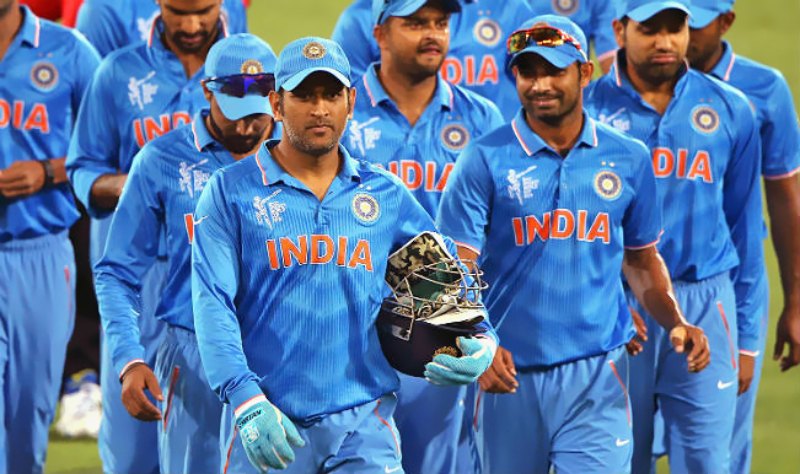
The past two World Cup editions for India have been a sage of them peaking way too early, and then coming up short in the knockouts.
In 2015, India swept past all the teams in the Group-stage, before falling short against eventual champions Australia in the semi-final.
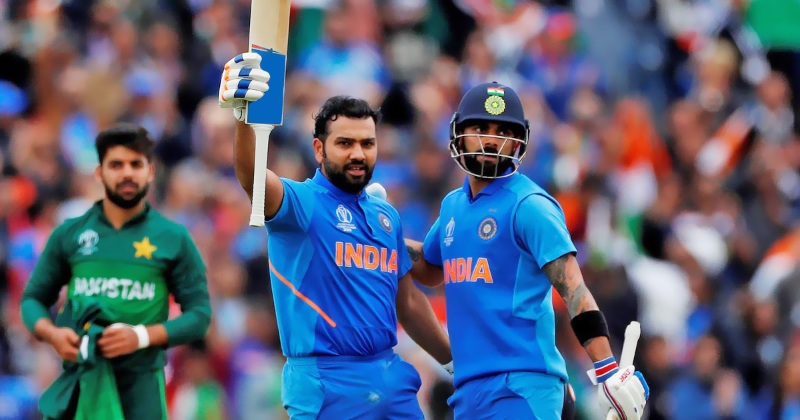
The 2019 event followed the same script as the Men in Blue once again faltered at the knockout stage to their bogey team, New Zealand.
Rohit Sharma had a memorable 2019 event as he smashed a record 5 centuries and 600+ runs.
But, having dominated the entire round-robin stage, India's worst nightmare came true on the day of the semi-final as their much-vaunted top-3 got dismissed cheaply, and the middle-order, sans Ravindra Jadeja (77 off 59) failed to deliver amid extreme pressure.

The lingering image from that semi-final is of a dejected MS Dhoni walking back to the pavilion after getting run-out by Martin Guptill, amid pin-drop silence among heartbroken Indian fans and players alike.
2023: A billion hearts dream again

4 years later, Rohit is all set to lead the Indian team in a home World Cup, and just like 2011, a billion fans are desperate for glory after having suffered repeated heartbreaks at ICC events in the past decade.
After having missed the 2011 event, Sharma will look to complete his redemption arc by joining Kapil Dev and MS Dhoni in the list of India's World Cup-winning captains.
This World Cup will also be Virat's 2nd campaign on home soil, and he will be looking to put up an all-time display, much like he has done in T20 World Cups in the past 12 years.
Kohli has had his moments in the sun at the World Cup, but the undisputed GOAT of this format has never been able to lighten up the tournament like he has done in T20Is. This WC proved a great opportunity for the King to assert his dominance at the grandest stage of them all, and add another World Cup medal to his tally.
Come October 08th, a billion hearts will bleed blue with hopes that a decade of unrelenting pain will finally be exorcised. An entire generation has grown up since India last won the World Cup. Maybe it's time to ignite aspirations, pride and hope in the future superstars, much like what Kapil, Dhoni and their troops did in 1983 & 2011?
Can Rohit & co do it? The entire world will be watching, it always is.
Featured Image Credit: ICC
